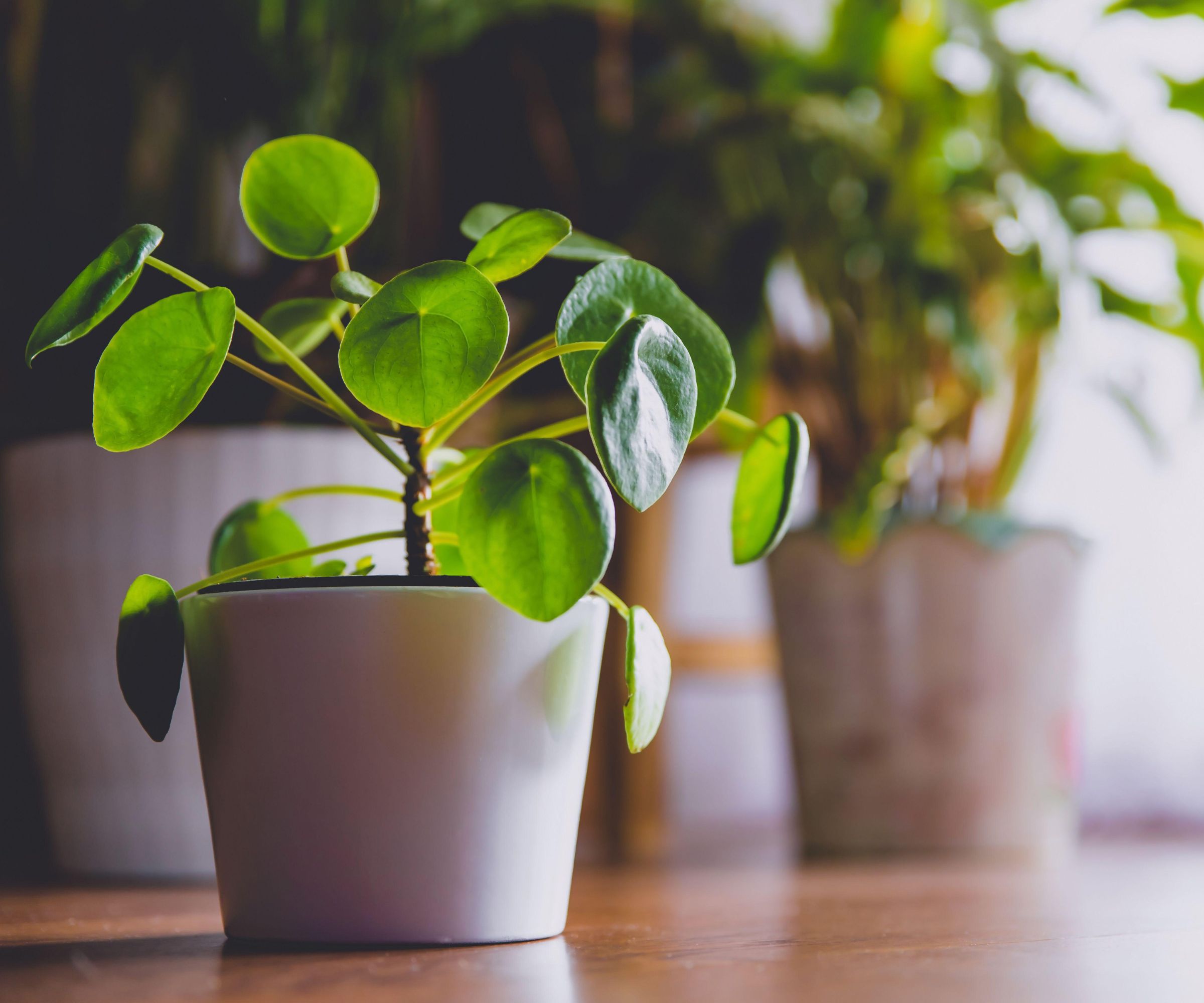Why are my Chinese money plant's leaves curling? And how to fix them
Unsure why Chinese money plant's leaves are curling? These expert tips will tell you why and how to restore lush and healthy growth


Learning why leaves on the Chinese Money Plant curl, and how to prevent this, is key to growing a striking and healthy plant.
Instantly recognizable for its mass of deep green circular leaves, this indoor beauty is hugely popular right now and makes a real impact displayed solo on a table or windowsill, or as part of a verdant indoor jungle.
Although it's pretty easy to grow and care for Chinese money plants, these handsome plants do occasionally suffer from foliage issues. Often a sign of that it is lacking in some essential requirement, follow these expert tips on how to regrow elegant, glossy foliage and what the plant needs to keep it that way.
Why are my Chinese money plant's leaves curling?
There are several reasons why these normally flat, circular leaves are curling up.
Hannah McWhorter at indoor plant specialists Lively Root suggests, ‘If your indoor plant isn’t getting enough light or water, the leaves will curl inwards. On the flip side, if it’s getting too much light exposure and water, it will roll outwards.’
Still not sure of the cause? Then it’s well worth exploring the most likely causes listed below in more detail.

Overwatering: Like most indoor plants – Pilea Peperomioides to give it its botanical name – prefers to live in drier conditions and absolutely detests sitting in waterlogged conditions.
Design expertise in your inbox – from inspiring decorating ideas and beautiful celebrity homes to practical gardening advice and shopping round-ups.
If you suspect your plant has been overwatered, the best course of action is to stop watering until the surrounding soil has completely dried out. To do this start by removing the plant from its pot – this can be as simple as slipping the inner plastic nursery pot (complete with drainage holes) out of the decorative plant holder. Place on a newspaper or kitchen towel to absorb excess moisture and leave to dry out naturally.
As a rule, Mark Lawlor from Happy Houseplants says, ‘You should water Chinese money plant only when it is starting to dry out – try the top two inches of soil and if these are dry, soak the plant through and allow it to drain.’
Poor drainage: These plants do not cope well with soggy conditions, so take a closer look at the roots if you suspect this problem. Make sure the nursery pot has plenty of drainage holes in the base and cover with a layer of fine gravel.
Repotting the plant in an indoor potting compost with added grit will help too. Standing the newly potted plant on a stone filled saucer is another way to increase humidity, speed up moisture evaporation while also improving drainage.
Lack of light: Not having enough daylight will take its toll on the Chinese money plant’s striking green leaves. Preferring a bright position, it will thrive on a windowsill or table nearby. Do avoid strong direct sunlight though as this is likely to scorch the foliage.
Cecilia Turner says on her blog My Tasteful Space, ‘I’ve tried different light exposures and I have to say that this plant loves a lot of bright light, as long as it is not direct sunlight. It’s ideal location is by a north facing window!’
Not enough water: It’s not often a house plant suffers from underwatering, but it is possible. Unlike cacti and succulents, Chinese money plants do like a little water on a regular basis. Hannah McWhorter advises to, ‘Check the soil once a week for moisture before adding more. If the plant droops, check the soil-moisture and adjust as needed.’ She also adds that, ‘There is no need to spritz this plant. It does well with routine watering.’
How do you stop pilea's leaves curling?
Check that your plant hasn't been over- or under-watered; ensure the roots aren't bound in the container; and make sure lighting levels suit the plant. That done, look to feeding your pilea, because it may be nutrient deficient. The other clue your pilea might give you is yellowing bottom leaves that are curling too; if this happens, try a high-nitrogen nutrient feed, and repeat monthly.
How do you fix curling leaves on plants?
Curling leaves on plants are often caused by heat stress; in curling up its leaves, the plant is able to slow down evaporation and retain more moisture. If your plants leaves are curling, move them to a cooler spot – away from heaters and direct sunlight, especially.

Journalist Jill Morgan has spent over 20 years writing and editing gardening, interior and property features. Titles she has worked on include The English Home, House Beautiful, Ideal Home, Houzz and Modern Gardens and she writes regularly for H&G as a Contributing Editor. Whilst she is a dab hand at renovation projects and DIY, she is happiest when out digging in the garden or planning a new border.